Orienting Moonstone / Anorthoclase for Adularescence
Oct 10, 2023 19:41:02 GMT -5
Peruano, rockjunquie, and 3 more like this
Post by lapidary1234 on Oct 10, 2023 19:41:02 GMT -5
@hefty your post has had me thinking so I went down the Wikipedia rabbit hole as well. I have heard the term schiller before but never really thought about it, I always described moonstone as iridescent or maybe opalescent but it seems like the correct term is schiller effect. Light play refracting/reflecting off the different layers of minerals.
The knowledge I have with geology is self taught as well so forgive any incorrect information I have.
While anorthoclase feldspar has two cleavage planes I'm how many planes a feldspar crystal has or how the composition of the molecules make up the planes of a crystal.
Also might be worth noting, this material displays a schiller flash of blue when oriented along what I'd consider the "face" cleavage plane. It also displays what is probably considered "aventurescence" along what I'd describe as the "side" cleavage plane.
I live in the town where this material is sourced and try to be active in the rock/gem/lapidary community so I have a decent amount of this stuff. In fact I was just out there collecting last Wed. Sounds like I may have seen you! I was in the old hatchback honda!!
Now onto the meat of your question, I took some pictures so hopefully I can get them to insert as we go along here...
The most straightforward way I've found to capture the schiller effect is doing what I call "rubs". Start by finding it in the rough, the 10⁰ rotation from the "face" plane sounds about right. Example
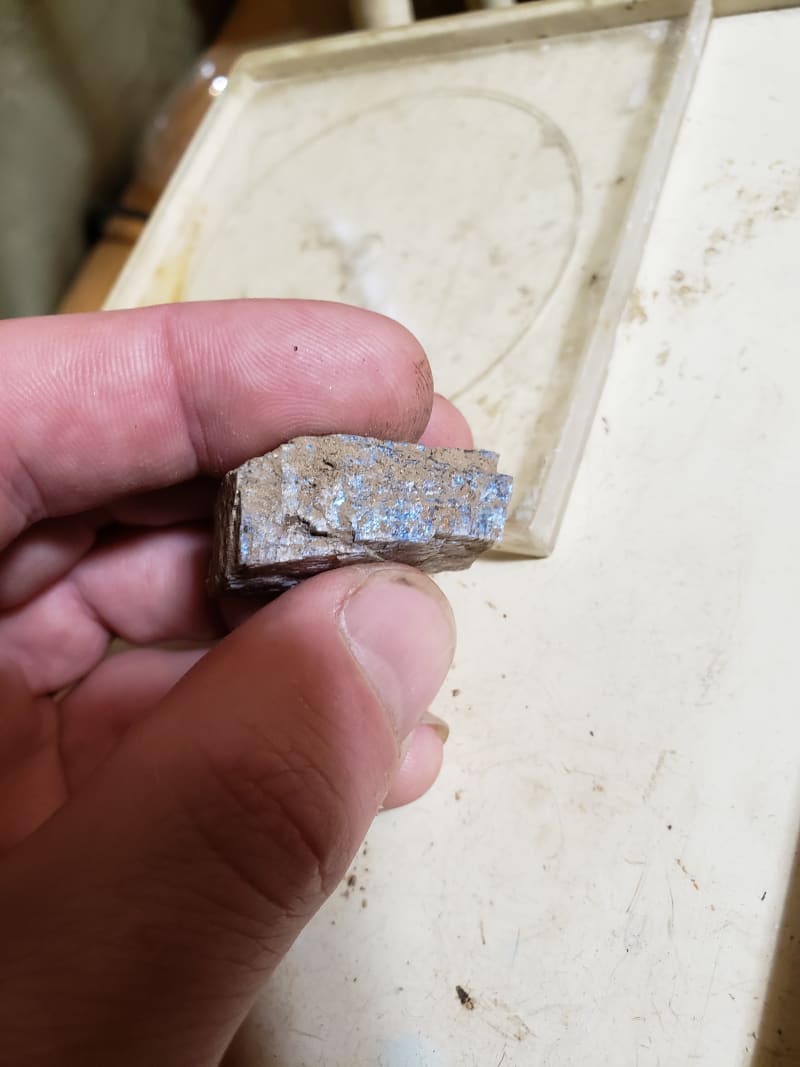
Next ill just flatten out/smooth off the surface above. Example
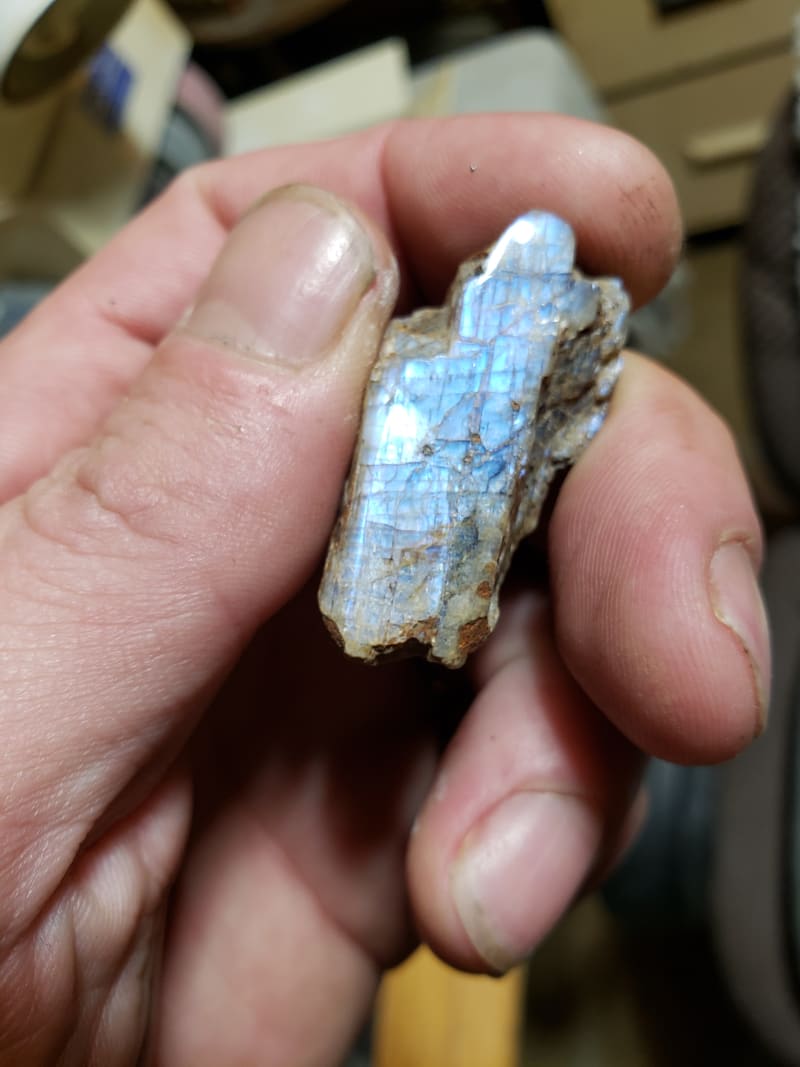
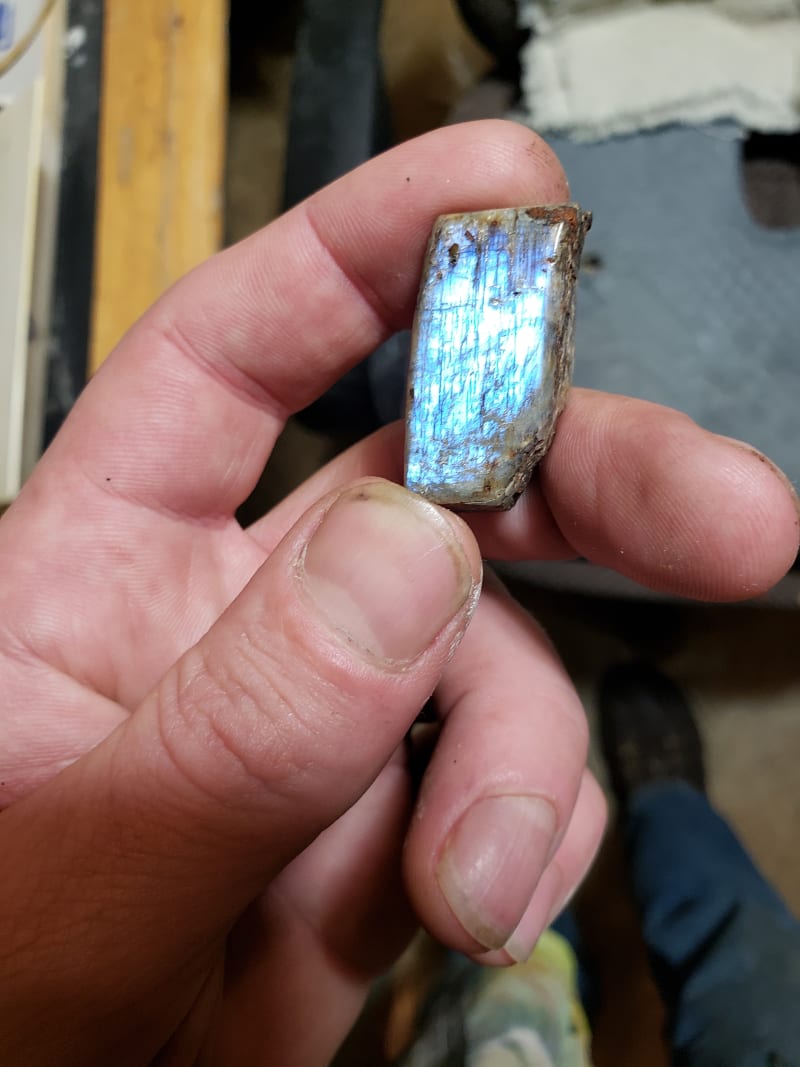
There is an interesting phenomenon where the stone displays a blue schiller at one angle and a siler schiller at another. I have noticed the most when rotating a stone 180⁰ but your comment regarding the 10⁰ part had me investigate a bit more. The change in color can happen at any angle actually it was just more apparent when rotating a stone 180⁰. This supports the idea of the schiller effect occurring from light interplay between layers of minerals. Here are some examples of the change from silver and blue. First two examples are rotated 180⁰. Examples
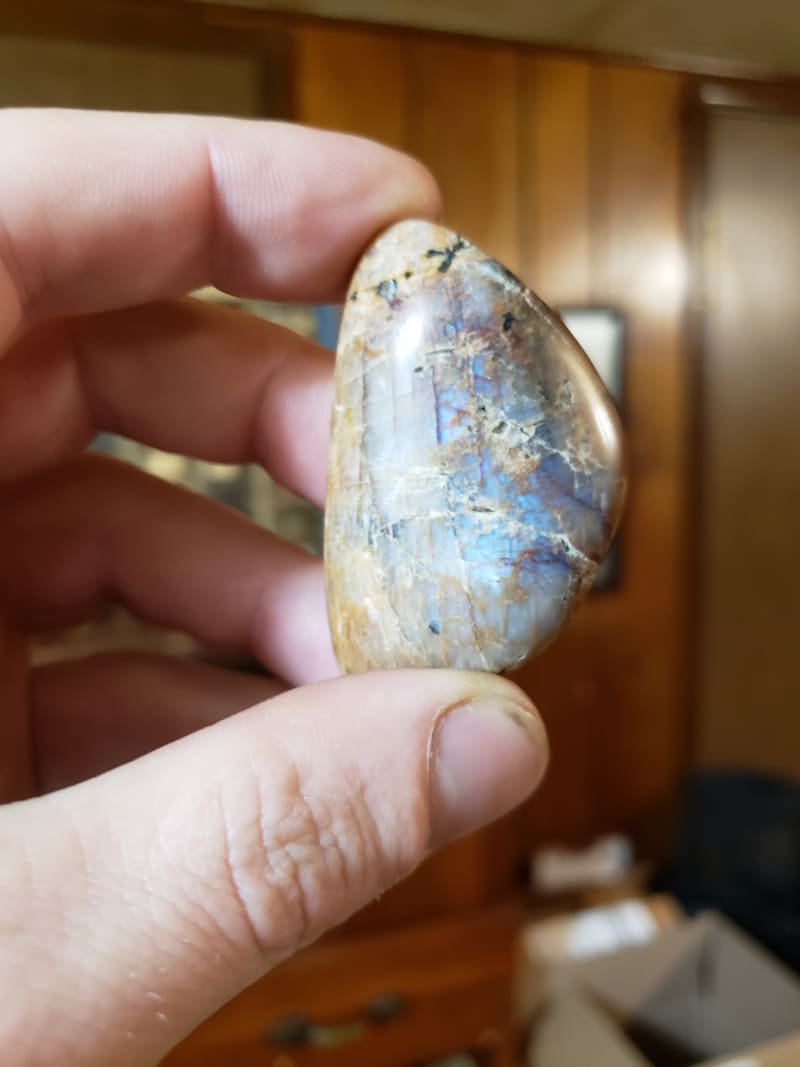
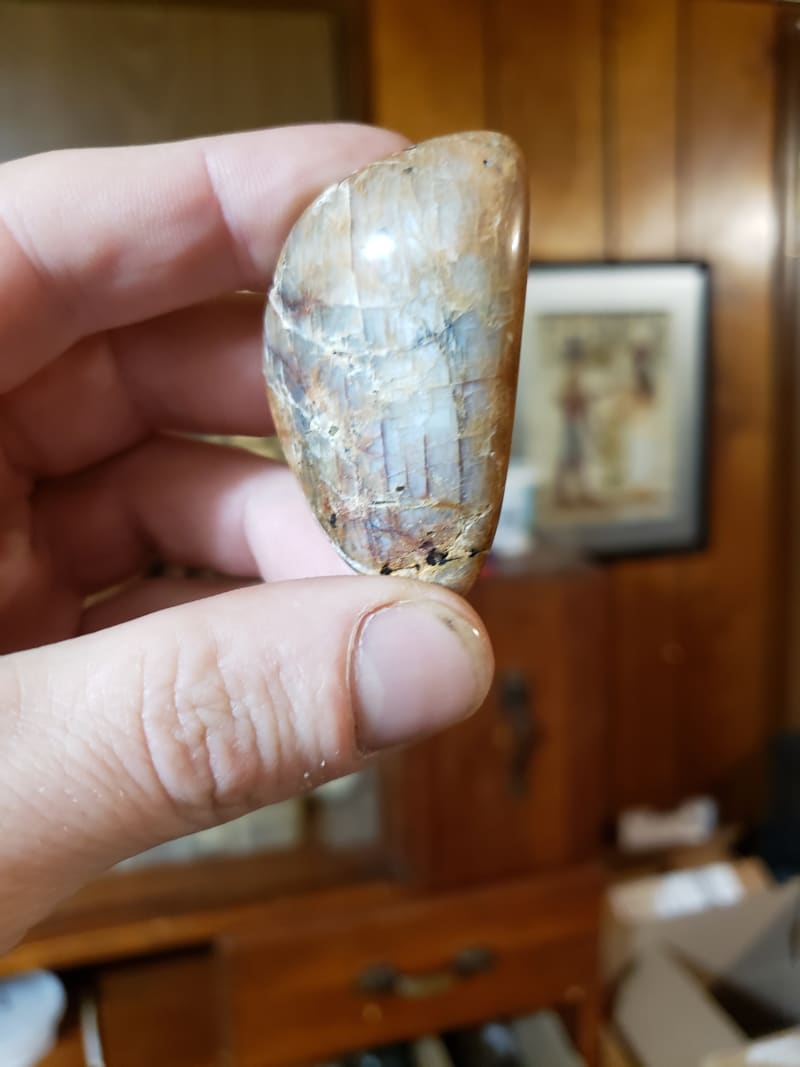
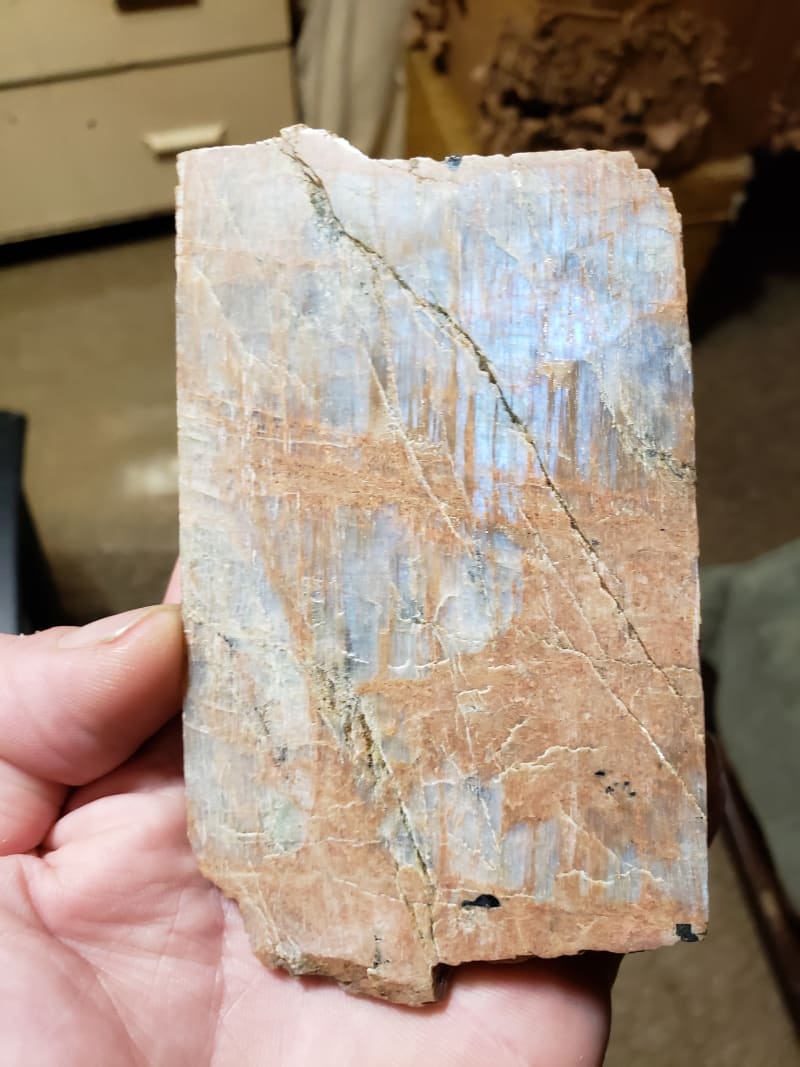
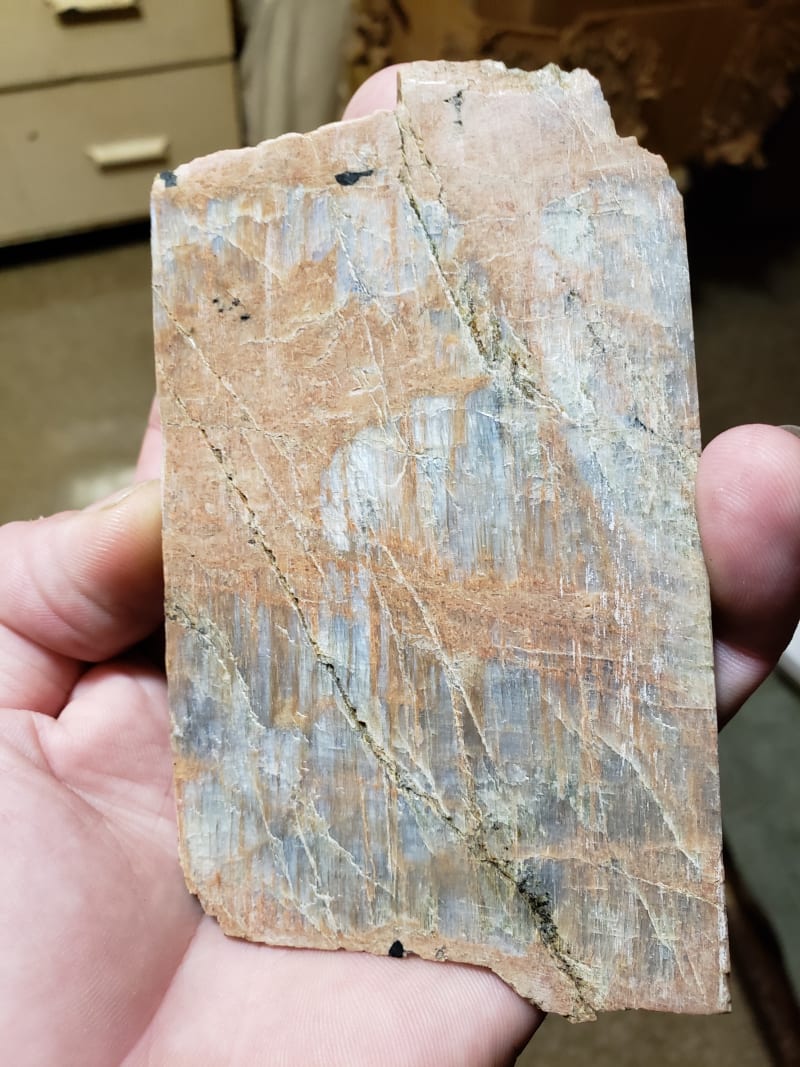
Next example is a tumbled stone i got two display the change in color effect by just rotating it very slightly. Example
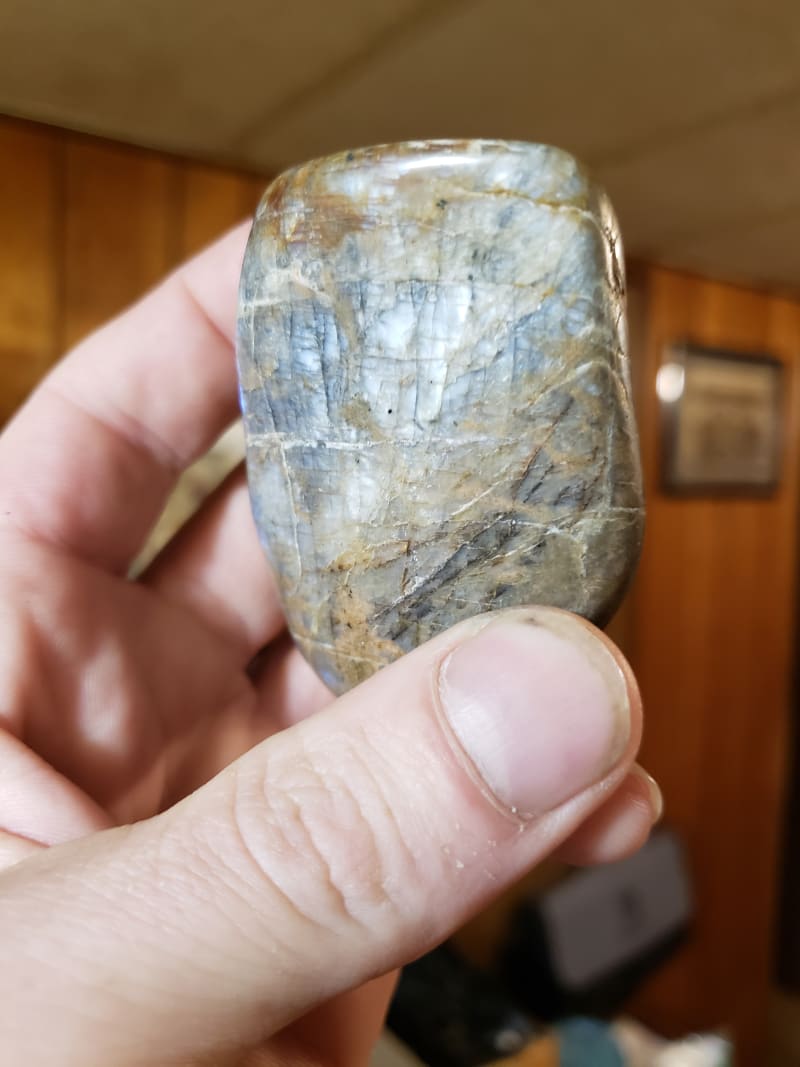
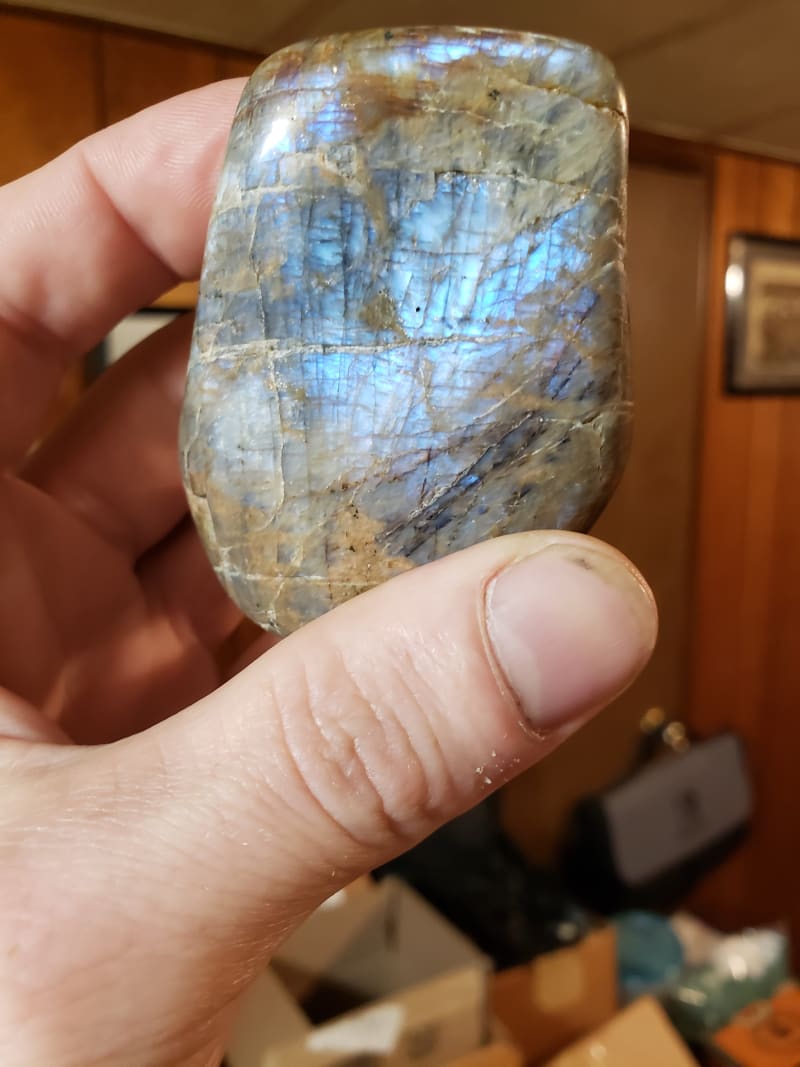
Regarding cutting domes and cabochons, it is very tricky indeed with how to cut the stone so that it not only displays the schiller but that it will display well as a finished product. This has to do with the angle that the stone will be viewed and the best advice I can give is to try and hold the stone the way it will be viewed and cut accordingly. This is easier said than done and when you have a stone turn out nicely you will definitely cherish it and know its value! Here are a couple examples of the few I have that finished nicely and display well. Examples
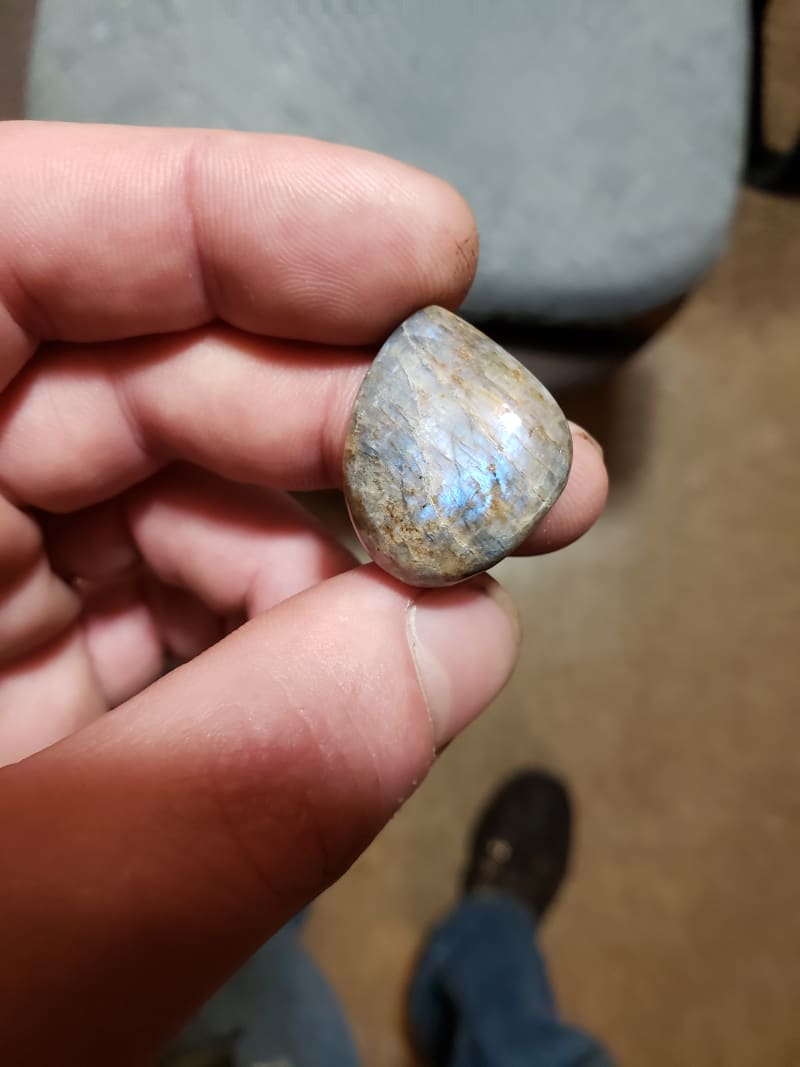
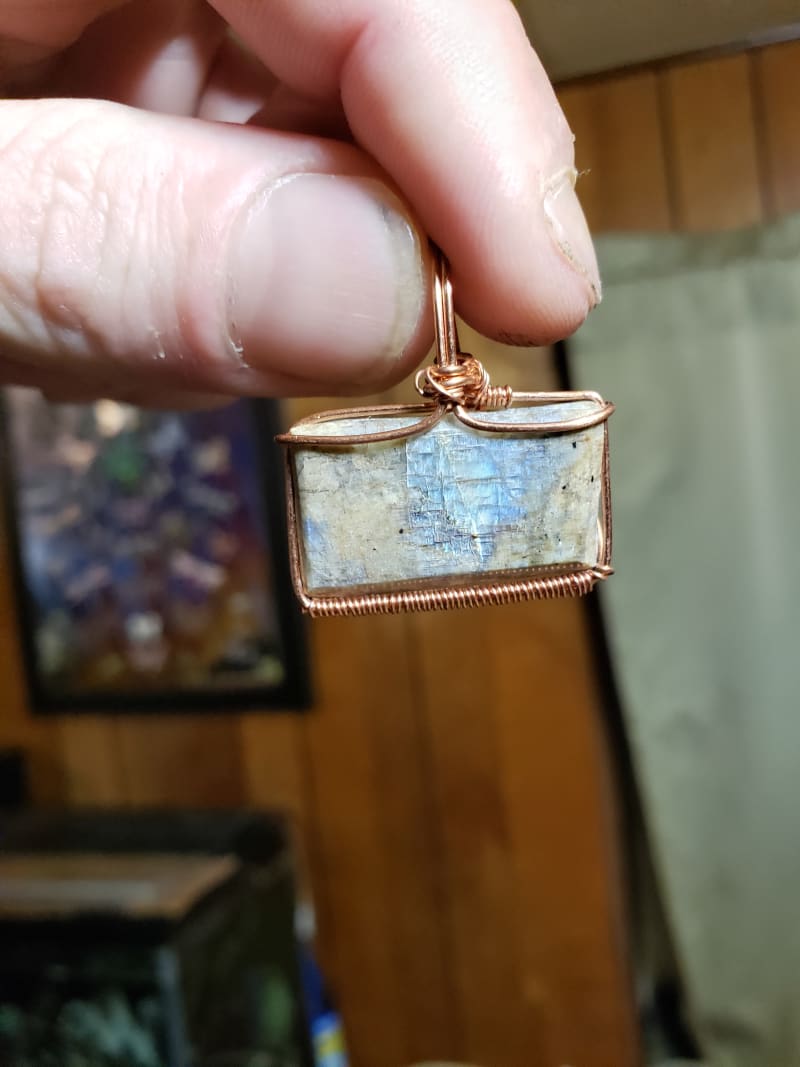
Finally, if you haven't noticed yet you will soon enough, this material is incredibly brittle and prone to fracture. The "every stone is unique and should be treated accordingly" rule definitely applies here! I can't tell you how many pieces I've been working that look great and somewhere along the process they break. It has slowly made me understand why people charge so much for a nice finished piece!
I am not a perfectionist and don't mind my rocks having a "natural" look to them so I do alt of rubs and hand them out to friends. These are quick and easy enough to do quickly with as minimal breakage as I can hope for.
Another strategy is to put them in a rotary tumbler through stage one. Feldspar is on the softer side (6 iirc) so they actually shape a bit after a week or so. This also gives them the chance to break at any weak areas.
I have noticed when tumbling, I'll get some schiller effect/color play in spots i would never have thought to try to look/grind. There are some stones that show light play along all sides of the stone, the adularescence you were speaking of as well as the aventurescence on the perpendicular sides. There is also sometimes slight aventurescence to be found on the same side that displays the adularescence. These are fewer and farther between but I personally dubbed these "sun&moon stones" because the glitter/speckle of the aventurescence looks strikingly similar to Sunstone. I will try and find one of these and post a picture as well.
It is very unique material and very rewarding when you produce a nice stone! I hope I provided you with some info that helps you in your endeavors. Cheers
lapidary1234/Josh
The knowledge I have with geology is self taught as well so forgive any incorrect information I have.
While anorthoclase feldspar has two cleavage planes I'm how many planes a feldspar crystal has or how the composition of the molecules make up the planes of a crystal.
Also might be worth noting, this material displays a schiller flash of blue when oriented along what I'd consider the "face" cleavage plane. It also displays what is probably considered "aventurescence" along what I'd describe as the "side" cleavage plane.
I live in the town where this material is sourced and try to be active in the rock/gem/lapidary community so I have a decent amount of this stuff. In fact I was just out there collecting last Wed. Sounds like I may have seen you! I was in the old hatchback honda!!
Now onto the meat of your question, I took some pictures so hopefully I can get them to insert as we go along here...
The most straightforward way I've found to capture the schiller effect is doing what I call "rubs". Start by finding it in the rough, the 10⁰ rotation from the "face" plane sounds about right. Example

Next ill just flatten out/smooth off the surface above. Example


There is an interesting phenomenon where the stone displays a blue schiller at one angle and a siler schiller at another. I have noticed the most when rotating a stone 180⁰ but your comment regarding the 10⁰ part had me investigate a bit more. The change in color can happen at any angle actually it was just more apparent when rotating a stone 180⁰. This supports the idea of the schiller effect occurring from light interplay between layers of minerals. Here are some examples of the change from silver and blue. First two examples are rotated 180⁰. Examples




Next example is a tumbled stone i got two display the change in color effect by just rotating it very slightly. Example


Regarding cutting domes and cabochons, it is very tricky indeed with how to cut the stone so that it not only displays the schiller but that it will display well as a finished product. This has to do with the angle that the stone will be viewed and the best advice I can give is to try and hold the stone the way it will be viewed and cut accordingly. This is easier said than done and when you have a stone turn out nicely you will definitely cherish it and know its value! Here are a couple examples of the few I have that finished nicely and display well. Examples


Finally, if you haven't noticed yet you will soon enough, this material is incredibly brittle and prone to fracture. The "every stone is unique and should be treated accordingly" rule definitely applies here! I can't tell you how many pieces I've been working that look great and somewhere along the process they break. It has slowly made me understand why people charge so much for a nice finished piece!
I am not a perfectionist and don't mind my rocks having a "natural" look to them so I do alt of rubs and hand them out to friends. These are quick and easy enough to do quickly with as minimal breakage as I can hope for.
Another strategy is to put them in a rotary tumbler through stage one. Feldspar is on the softer side (6 iirc) so they actually shape a bit after a week or so. This also gives them the chance to break at any weak areas.
I have noticed when tumbling, I'll get some schiller effect/color play in spots i would never have thought to try to look/grind. There are some stones that show light play along all sides of the stone, the adularescence you were speaking of as well as the aventurescence on the perpendicular sides. There is also sometimes slight aventurescence to be found on the same side that displays the adularescence. These are fewer and farther between but I personally dubbed these "sun&moon stones" because the glitter/speckle of the aventurescence looks strikingly similar to Sunstone. I will try and find one of these and post a picture as well.
It is very unique material and very rewarding when you produce a nice stone! I hope I provided you with some info that helps you in your endeavors. Cheers
lapidary1234/Josh













